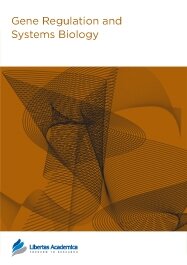

Publication Date: 20 Feb 2013
Type: Perspective
Journal: Gene Regulation and Systems Biology
Citation: Gene Regulation and Systems Biology 2013:7 23-39
doi: 10.4137/GRSB.S10885

Complex biological systems manifest a large variety of emergent phenomena among which prominent roles belong to self-organization and swarm intelligence. Generally, each level in a biological hierarchy possesses its own systemic properties and requires its own way of observation, conceptualization, and modeling. In this work, an attempt is made to outline general guiding principles in exploration of a wide range of seemingly dissimilar phenomena observed in large communities of individuals devoid of any personal intelligence and interacting with each other through simple stimulus-response rules. Mathematically, these guiding principles are well captured by the Global Consensus Theorem (GCT) equally applicable to neural networks and to Lotka-Volterra population dynamics. Universality of the mechanistic principles outlined by GCT allows for a unified approach to such diverse systems as biological networks, communities of social insects, robotic communities, microbial communities, communities of somatic cells, social networks and many other systems. Another cluster of universal laws governing the self-organization in large communities of locally interacting individuals is built around the principle of self-organized criticality (SOC). The GCT and SOC, separately or in combination, provide a conceptual basis for understanding the phenomena of self-organization occurring in large communities without involvement of a supervisory authority, without system-wide informational infrastructure, and without mapping of general plan of action onto cognitive/behavioral faculties of its individual members. Cancer onset and proliferation serves as an important example of application of these conceptual approaches. In this paper, the point of view is put forward that apparently irreconcilable contradictions between two opposing theories of carcinogenesis, that is, the Somatic Mutation Theory and the Tissue Organization Field Theory, may be resolved using the systemic approaches provided by GST and SOC.
PDF (583.16 KB PDF FORMAT)
RIS citation (ENDNOTE, REFERENCE MANAGER, PROCITE, REFWORKS)
BibTex citation (BIBDESK, LATEX)
XML
PMC HTML

Publishing in Gene Regulation and Systems Biology was a very positive experience. I was impressed by the fast and uncomplicated submission process as well as the clear and professional peer review process which helped to improve the manuscript. The Libertas Academica team was very patient and helpful. I would definitely recommend the journal to other colleagues in the field!
Facebook Google+ Twitter
Pinterest Tumblr YouTube